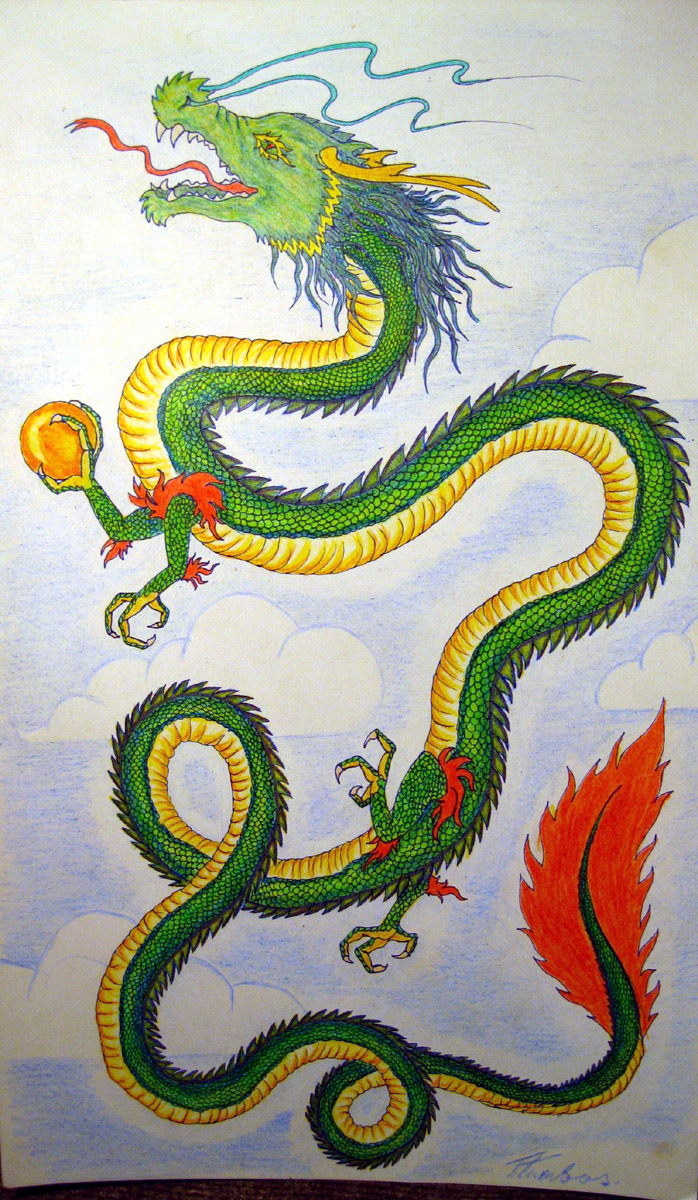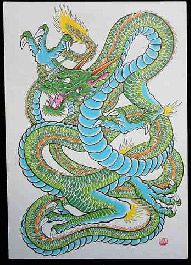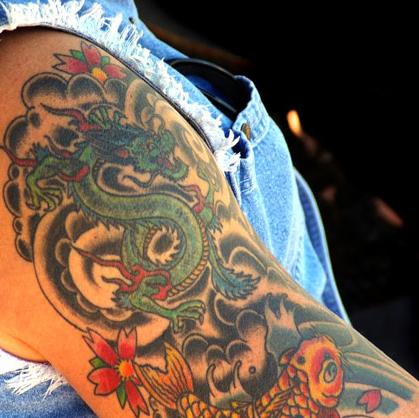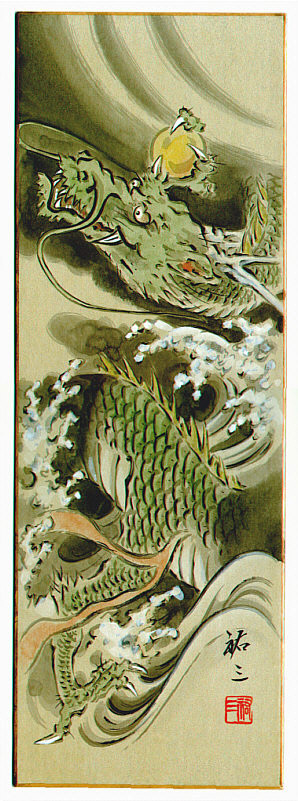Transferred from the old dragon site.
This was written when I was a teenager. If I come across new and significant info, I’ll add it here. You can also leave a comment or email me if you have feedback to share!
In the mid-2000s, I received several emails from visitors who were interested in getting a “Japanese Good Luck Dragon Tattoo” – aka Fuku Riu / Fuku Ryu (Ryu being the Japanese spelling).
Here’s one page solely dedicated to it.
NOTE: Please read up as much as you can, from a variety of sources, when deciding on the best dragon tattoo for yourself!
Fuku Riu: General Aspects to Look Out For
The more cheerful dragons in eastern mythology tend to be either looking upwards or “ascending” (towards the sky, the heavens, success, etc).
Fuku Riu is among the most favored dragon of all, widely known for its good luck.
Fuku Riu is likely to have:
- a certain “liveliness” as opposed to “fierceness.”
- a healthy-looking body associated with strength.
This makes its presence auspicious for activating good luck, good fortune, prosperity and abundance.
If you’re following technical details, then Japanese dragons traditionally have three toes. (Korean dragons have four toes, while Chinese dragons have five.)
For more information, you can read my note on Identifying Japanese Dragons (link will be updated soon).
Fuku Riu Pictures
So far these are the images I’ve seen which could be Fuku Riu.



When is it NOT Fuku Riu?
I’ve come across this painting titled “Fuku Riu,” but was kindly told by a visitor why the dragon is not Fuku Ryu.
My note from Aug 2007: Originally, the title of this painting above was “(Japanese) Lucky Dragon/Fuku Ryu”. I found this at an online art gallery.
However, due to this dragon being located in the ocean, it is likely not to be Fuku Riu, as good luck dragons are often found ascending in the sky, towards the heavens.
This could mean that the translated/presumed title of this artwork was not accurate to begin with.
Thanks to visitor char—–@aol.com for the note!
Eastern Dragon Colors and Meaning
Dragons and the accompanying colours have different meanings in Eastern mythology. These are the common colors:
- Yellow is superior, imperial, a symbol of the centre of the Earth.
- Gold colored dragons have many special attributes such as wealth, wisdom, kindness, and the ability to face challenges head on.
- Blue and Green are symbols of the East, the chief spirits of the Spring. Green represents good fortune, good health, or luck.
- Red is associated with storms, the South, Summer, the heart and large intestine, fire, activity, and good fortune.
- Black is associated with storms, the North, winter, vengeance, and worry.
- White represents Autumn, mourning, and death. In Eastern culture, it’s different from the association of the color white with purity.
More information on History of Chinese Dragons.
What does the Eastern Dragon symbolize?
Dragons in the East are revered. The Dragon is looked upon as the ultimate symbol of extremely good fortune. Feng Shui masters today still treat dragons with great respect and have symbols of the dragon as their ultimate possession.
So if you have a Japanese/Eastern dragon tattoo – respect it and take extra good care of it 😉



2 replies on “Fuku Riu Dragon”
[…] The Eastern Dragon art and Japanese Good Luck Dragon (Fuku Riu) pages have been transferred over to this new […]
[…] Fuku Riu Dragon – Dragonsinn […]